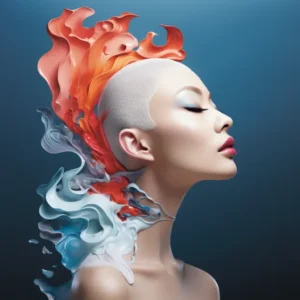Beauty standards, reflective of societal ideals and cultural values, have undergone a fascinating evolution throughout history. This exploration delves into the intricate journey of beauty standards, tracing their transformation from ancient civilizations to the contemporary era. By examining diverse cultural influences, societal shifts, and the impact of media, this article aims to provide a historical perspective on how perceptions of beauty have evolved over the centuries.
Ancient Civilizations: Symbolism and Adornments
In ancient civilizations, beauty was often synonymous with symbolism and cultural significance. Mesopotamians adorned themselves with intricate jewelry and symbolic tattoos, while the Egyptians embraced cosmetics for both aesthetic and religious purposes. The perception of beauty was deeply intertwined with societal roles, spiritual beliefs, and notions of power and prestige.
Classical Greece and Rome: Aesthetic Harmony and Proportions
Classical Greece and Rome introduced the concept of aesthetic harmony and ideal proportions. The Greek emphasis on the golden ratio influenced art, architecture, and the portrayal of the human form. In Rome, elaborate hairstyles and skincare routines became integral to notions of beauty. The classical era laid the foundation for Western ideals of physical perfection and balance.
Middle Ages: Purity and Ethereal Beauty
During the Middle Ages, beauty ideals shifted towards a perception of purity and ethereal beauty. Fair skin, rosy cheeks, and a modest demeanor were prized attributes. The concept of courtly love influenced ideals of femininity, emphasizing grace and modesty. Beauty became associated with moral virtue, reflecting the religious and cultural values of the time.
Renaissance: Rebirth of Individualism and Natural Beauty
The Renaissance marked a revival of interest in classical ideals, but with a nuanced emphasis on individualism. Artists celebrated the human form, and beauty was seen as a reflection of inner virtue. While cosmetics were used, there was a renewed appreciation for natural beauty. The Renaissance laid the groundwork for the evolving concept of personal style and self-expression.
Victorian Era: Etiquette and Demure Elegance
The Victorian era was characterized by a complex set of beauty standards influenced by etiquette and societal expectations. Women were encouraged to embody demure elegance, with an emphasis on a pale complexion, corseted silhouettes, and modesty. Grooming and cleanliness became paramount, reflecting a blend of moral values and evolving fashion trends.
Roaring Twenties: Liberation and the Flapper Aesthetic
The 1920s witnessed a radical shift in beauty standards with the advent of the flapper aesthetic. The liberated spirit of the era embraced shorter hemlines, bobbed hairstyles, and a rejection of traditional norms. Beauty ideals became more diverse, challenging the previous emphasis on Victorian modesty. The Roaring Twenties marked a pivotal moment in the redefinition of feminine beauty.
Post-War Period: Glamour and the Rise of Mass Media
The post-war period saw the rise of glamour influenced by Hollywood and the burgeoning mass media. Icons like Marilyn Monroe epitomized a voluptuous and glamorous beauty ideal. Beauty standards became more accessible through magazines, movies, and television, shaping a globalized perception of attractiveness.
1960s to 1980s: Diversity and Cultural Influences
The 1960s to 1980s witnessed a departure from uniform beauty standards. The rise of the counterculture and civil rights movements challenged traditional norms. Models like Twiggy celebrated a slender aesthetic, while the Black is Beautiful movement embraced diverse representations of beauty. Cultural influences, including the rise of disco and punk, contributed to a more eclectic and inclusive beauty landscape.
1990s to Early 2000s: Supermodels and Body Positivity
The 1990s celebrated the era of the supermodel, with figures like Naomi Campbell and Cindy Crawford dominating the fashion scene. The rise of body positivity gained momentum, challenging unrealistic standards. However, the era also saw the persistence of narrow ideals, exacerbated by the emergence of digitally altered images in media.
Contemporary Era: Diversity, Inclusivity, and Self-Expression
The contemporary era marks a significant shift towards embracing diversity and challenging traditional beauty norms. The influence of social media has played a pivotal role in amplifying diverse voices and celebrating individuality. Beauty standards now encompass a broad spectrum, recognizing various body types, skin tones, and gender expressions. The emphasis on self-expression has given rise to a more inclusive and fluid definition of beauty.
The evolution of beauty standards is a testament to the dynamic nature of human perceptions and cultural influences. From ancient symbolism to contemporary self-expression, the concept of beauty has continuously transformed, reflecting the values and aspirations of each era. As society continues to embrace diversity and challenge traditional norms, the beauty standards of the future are likely to be characterized by inclusivity, authenticity, and a celebration of individual uniqueness.

